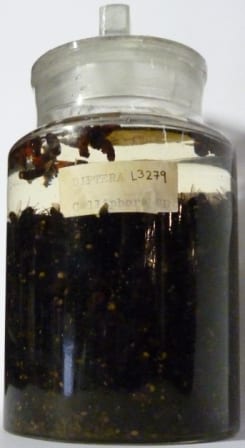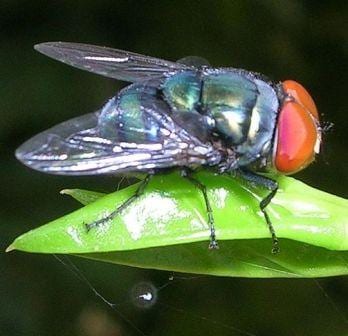Specimen of the Week: Week 114
By Emma-Louise Nicholls, on 16 December 2013
 Last week, in a flurry of productivity I wrote the Specimen of the Week topic schedule up to Valentine’s Day. In coming up with so many specimens all at once, I asked a Student Engager what specimen they would like to read about. It is entirely her doing therefore that I ended up researching an animal that I would never have thought to be quite so exciting as it turns out to be. I almost want to put a book about them on my Christmas wish list (yes it is still ok to make a list at age 32). This week’s Specimen of the Week is…
Last week, in a flurry of productivity I wrote the Specimen of the Week topic schedule up to Valentine’s Day. In coming up with so many specimens all at once, I asked a Student Engager what specimen they would like to read about. It is entirely her doing therefore that I ended up researching an animal that I would never have thought to be quite so exciting as it turns out to be. I almost want to put a book about them on my Christmas wish list (yes it is still ok to make a list at age 32). This week’s Specimen of the Week is…
**The blue bottles**
1) Also known by the less attractive name of blow fly, the bluebottle is a common sight in British houses during the summer. Compared to other species within the UK, bluebottles are large, dark blue in colour to the point of appearing black, and have a beautiful sprinkling of silver on the abdomen (you have to look really closely). The body is wide and ‘fat’ and can vary in size from five to 13 mm in length. More on the exciting reason behind that teaser piece of information coming up in point 2.
2) The fascinating and exciting variety of body sizes found in bluebottles stems from their evolution. They have adapted in such a way that if, as larvae, that don’t receive enough food to grow up to be big and strong, they just grow up to be small and weedy, rather than die. Such scarcity of food can occur for two reasons; Firstly, flies lay a lot of eggs so competition for food upon hatching can be extremely high. Secondly, the main food source for larvae is carrion, which only lasts for a short period of time. Other than in extreme cases of starvation, a larva that accesses a severely limited level of nutrition before the food source is devoured, is only able to mature into a ‘miniature adult’. Awwww. Temperature also affects the final size of the adult bluebottle. Higher temperatures produce smaller flies, lower produces larger flies. Except in the case of temperatures in excess of 30 degrees, which don’t produce anything… this temperature is lethal to them.
3) Bluebottles are super exciting if you like CSI and the like. They may be large and fat but they have a knack of locating a dead body faster than any other insect. Assuming that the body is accessible to them, bluebottles take no time at all in colonising a dead body. Now given everything I told you in point 2, it should follow logically that bluebottles can therefore be of great help to the police at crime scenes involving suspicious deaths. Forensic entomologists (people that use insects in the study of crime) are able to determine with a pretty good degree of accuracy, the ‘minimum post-mortem interval’ (i.e. how long someone’s been dead for). A bluebottle growth model is used in relation to the temperatures at the scene. I refer you back to point 2 for a more detailed read through if you are confused.
4) Now I have got you hooked on these amazing little creatures, and got you all fond of them as a species, there is a sad junction coming up in the bluebottle’s road of life. Although not confirmed for wild individuals, female bluebottles are thought to have a lifespan of just one or two months on average during the Summer, surviving just long enough to lay a single batch of eggs. During the Winter however, they survive for up to six months, using a different method depending on where they live. Bluebottle populations in the South of the UK survive the Winter in adult form, whereas in the North, they overwinter as post-feeding larvae. In the North, as the days get shorter and colder, any larvae start to enter arrested development known as diapause. A fancy word for a period of no growth and a reduction of metabolic activity. A little like hibernating.

I thought you’d rather an image of a bluebottle on a flower than a
human cadaver…? (Image taken by Sue Welsh. Obtained from
www.commons.wikimedia.org).
5) If you’re eating, you may want to consider coming back to point 5 later on. Bluebottles are often observed in cases of myiasis. This one word describes a plethora of diseases all of which start as an infestation of maggots in the body of a live animal or human (I feel maggot is more appropriate here than the cute little larvae we came to know and love in points 1 to 4). Myiasis is very rare in humans (you’ll be pleased to know), most typically occurring in small mammals such as mice and hedgehogs, and more rarely reptiles such as tortoises, rather than humans.
Emma-Louise Nicholls is the Curatorial Assistant at the Grant Museum of Zoology
 Close
Close



